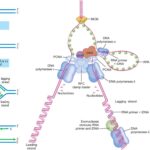IGCSE Biology 40 Views 1 Answers
Sourav PanLv 9November 14, 2024
State that water diffuses through partially permeable membranes by osmosis
State that water diffuses through partially permeable membranes by osmosis
Please login to save the post
Please login to submit an answer.
Sourav PanLv 9May 15, 2025
Water diffuses through partially permeable membranes by a process known as osmosis.
Understanding Osmosis
Definition of Osmosis
Osmosis is the movement of water molecules from an area of lower solute concentration to an area of higher solute concentration through a selectively or partially permeable membrane. This membrane allows water to pass through while restricting the passage of solutes (such as salts, sugars, and other molecules).Mechanism of Osmosis
- Concentration Gradient: Osmosis occurs in response to a concentration gradient. When two solutions with different concentrations are separated by a partially permeable membrane, water will move toward the area with a higher concentration of solutes.
- Equilibrium: The goal of osmosis is to achieve equilibrium, where the concentration of solutes is equal on both sides of the membrane. Water continues to move until there is no net movement, even though water molecules still move in both directions.
Importance of Osmosis in Biological Systems
Osmosis is vital for maintaining cell turgor pressure in plant cells, regulating fluid balance in animal cells, and facilitating various physiological processes. For instance:
- Plant Cells: Water uptake through osmosis helps maintain turgidity, supporting plant structure and growth.
- Animal Cells: Osmosis regulates hydration levels and nutrient transport across cell membranes, crucial for cellular function.
0
0 likes
- Share on Facebook
- Share on Twitter
- Share on LinkedIn
0 found this helpful out of 0 votes
Helpful: 0%
Helpful: 0%
Was this page helpful?




